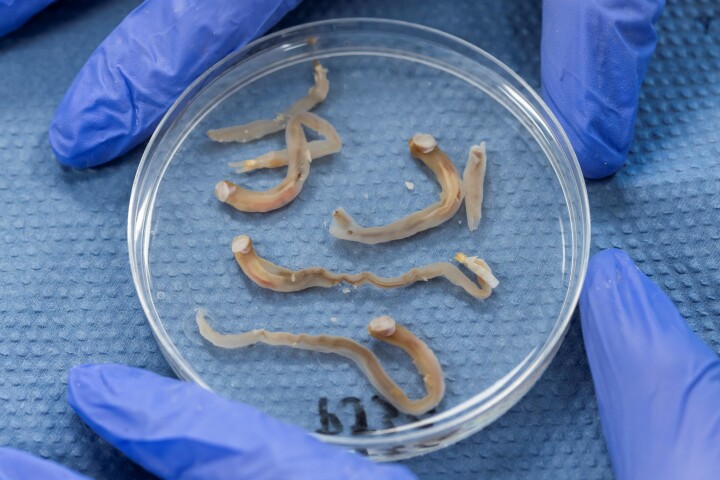Aquaculture
-
For centuries, shipworms have vexed mariners by boring into – and consuming – the hulls of wooden ships and boats. Soon, though, we may actually be eating those "worms," as they have successfully been farmed for the first time.
-
Aquaponics operations combine aquaculture and hydroponics, with nutrient-rich water from the former being used to fertilize plants in the latter. Soon, such systems could also be powered by methane biogas derived from their own fish feces.
-
Although salmon farms help take pressure off wild stocks, the penned fish do produce a lot of waste which is concentrated at one location. A new farm is exploring a solution to that problem, by raising salmon and kelp in adjacent pens.
-
A new study has shown that foods that come from the ocean or freshwater, known as "blue foods," have the potential to address several important global issues, including nutritional deficits, disease, and climate change.
-
While the farming of salmon does help take pressure off wild stocks, the feed used to raise the fish still isn't entirely sustainably sourced. That may change, however, thanks to nutrient-rich worms that eat readily available seaweed.
-
The processing of foods typically generates a lot of wastewater, which has to be cleaned up before being released back into local waterways. According to new research, however, that water could first be put to use as a very effective fertilizer for farmed seaweed.
-
Spawning in captivity can be hard on abalone, as aquaculture operators have to periodically yank the molluscs off the insides of their tanks to inspect their gonads. Things could soon get kinder and gentler, however, thanks to the use of ultrasound.
-
One of the ironies of salmon farming lies in the fact that although the salmon themselves aren't wild-caught, their feed is made up of fish that are. According to new research, it would be ecologically better if we just ate those feed fish ourselves.
-
There are several methods of oyster farming, one of which involves raising the molluscs in floating bags. Those heavy bags need to be frequently flipped over, so a team of MIT students has designed an "Oystamaran" robot to make the job easier.
-
Pineapple skin waste typically ends up being composted or dumped in landfills. According to new research, however, a feed additive made from powdered skins has been shown to help farmed tilapia avoid infections, plus it boosts their growth.
-
In order to purify wastewater, chemicals and UV light are commonly used. According to a new study, however, algae may be a more eco-friendly and energy-efficient alternative, resulting in water that's clean enough for use in aquaculture.
-
Along with its present use in biofuels and fertilizer, algae could potentially be utilized in applications ranging from bioprinted tissue to honeybee feed. That's why a new system is important, as it continuously checks that algae crops are healthy.
Load More











